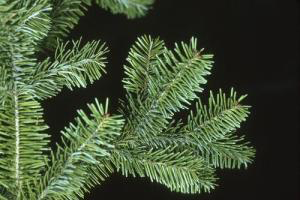Balsam fir is very popular during the Christmas holidays and is used for wreaths and Christmas trees.
Photo Credit: © Robert H. Mohlenbrock, USDA-NRCS PLANTS Database/USDA NRCS. 1995. Northeast wetland flora: Field office guide to plant species. Northeast National Technical Center, Chester.
Abies balsamea
Common Name: balsam fir
Plant Functional Group: Evergreen conifer
Class > Order > Family: Pinopsida > Pinales > Pinaceae
